We tested 9 off-road machines to crown our gravel bike of the year
Giant, Canyon, Trek, BMC, Scott, Specialized and more go head-to-head on the trails
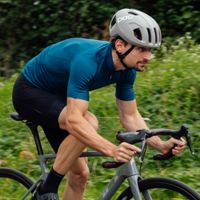
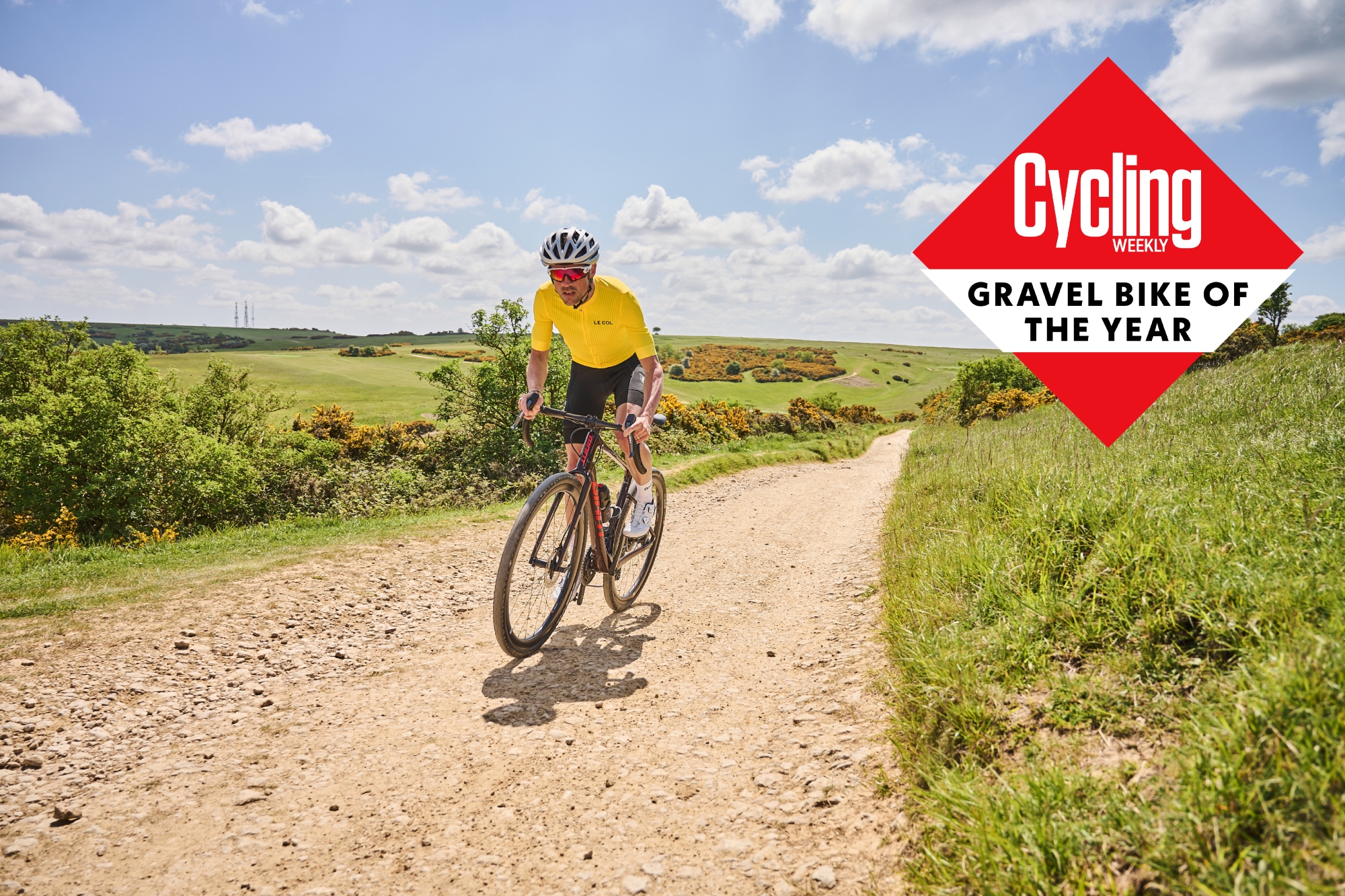
- Canyon Grail CF SLX 8 Di2
- Specialized Crux Pro
- Trek Checkpoint SL 7
- Cannondale Topstone 3
- BMC Kaius 01 Three
- Ribble Gravel SL
- Pearson On and On
- Scott Addict Gravel
- Overall Winner - Giant Revolt Advanced Pro
- Best Expedition Bike - Trek Checkpoint
- Best for Speed - BMC Kaius
- Best of British - Ribble Gravel SL
- Best Value - Scott Addict Gravel
- How we test
Having recently unveiled our selection for Race Bike of the Year, the time has now come to take this show off the road - and onto the trails! Welcome to Cycling Weekly’s 2023 Gravel Bike of the Year awards.
The first thing to note is that ‘gravel’ is in the process of ascending from being a ‘mere’ subcategory of drop-bar bikes - think ‘endurance’, ‘aero’, ‘lightweight’, etc. - to sit atop of a genus all of its own. Just as mountain bikes can be split into ‘cross-country’, ‘enduro’, ‘downhill’ etc. - each getting progressively burlier and more capable - the same is true for gravel bikes.
At the lightest and fastest end of the gravel spectrum, we have ‘all-road’ bikes, which feather the transition between the best endurance road bikes and those solely focused on the off-road. These tend to have wider clearances than road bikes - and generally have more scope for attaching various elements of luggage, including the best bikepacking bags.
Towards the middle of the spectrum we see a split. On the one hand, we have ‘adventure’ gravel bikes. These models are burlier than all-road bikes and come with a more relaxed geometry and (where possible) even more mounts. On the other hand, we have those models designed with the UCI Gravel World Champs in mind. These tend to be more similar to all-road bikes in their weights and their more ‘sporting’ geometry, but the tyre clearances of gravel race bikes are generally rather more generous for more technical courses
Finally, at the extreme end of gravel, we have the biggest and burliest of builds - although these themselves can be split into two distinct subspecies: long-distance, expedition bikepacking bikes and trail-shredding, monster-cross bikes - essentially drop-bar mountain bikes, by any other name.
We’ve chosen to focus on the middle section of the gravel spectrum for this grouptest, as these bikes are, on the whole, the most versatile rigs which keep your ‘gravel horizons’ at their broadest. Also, this swathe of the spectrum encompasses that nascent category of gravel race bikes, which is where a huge amount of industry development has been going over the last few years - as a result, these are responsible for many of the most interesting recent releases.
Bikes have been getting more expensive across the board - although not as universally for gravel bikes as for road bikes, it seems. Only a handful of the models on test stray across the five figure mark and none even get close to the £15,000 milestone. That said, the barrier to entry is still quite steep for gravel bikes in general. The majority of those on test start at over £3,000.
With that in mind, we’ve again listed the prices for the entry-level and top-end models, alongside the builds we had on test - to provide a greater context for the range as a whole.
We’ll be awarding our Best Gravel Bike award to the money-no-object best performer on test. We’ll also have our Best Value category, which simply factors price into that equation. In a nod to gravel’s broad spectrum, we’re also running two sub-category awards: Best for Expeditions and Best for Speed, to recognise those models which have a particular bent towards either end of gravel.
Finally, as a nod to Cycling Weekly magazine's 132-year heritage at the heart of British cycling, we’ve included a Best of British category. With gravel varying so greatly from country to country, what works on the wide open dirt roads of the Costa Brava or Arkansas generally isn’t so good on the bridleways of around Berkshire or Bolton. So we’ve called out the best models made by Brits, for Brits.
CYCLING WEEKLY'S GRAVEL BIKE OF THE YEAR 2023
Canyon Grail CF SLX 8 Di2
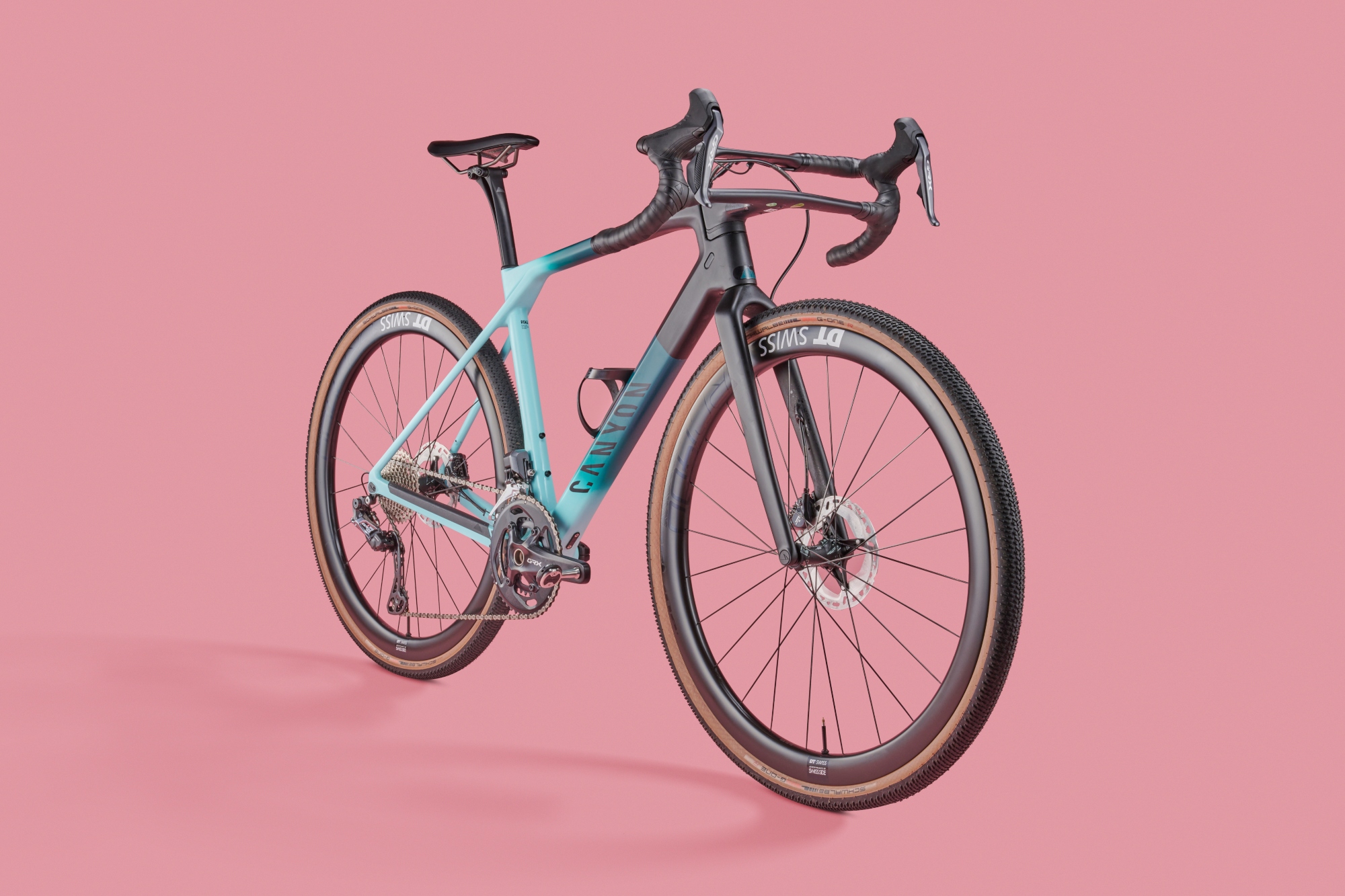
The Canyon Grail first launched back in 2018, and it’s hard to forget those crazy double decker handlebars - which are still resolutely part of the package. I’ll share my thoughts on the bars a little later on. First, I want to get stuck into all the other aspects of the Grail, as these can sometimes end up a little overshadowed by the bars.
Out on the trails, the Grail was an absolute bundle of laughs. The platform uses the same head angle and BB drop as its burlier big brother, the Grizl, but the Grail’s wheelbase is a good 16mm shorter - with the majority of that coming off the rear end.
The result is a composed front end with a reassuring degree of control, but with more than a dash of agile manoeuvrability at the rear. You particularly feel the difference when twisting through tight singletrack trails: with the rear axle tucked that bit further underneath you, it’s easier to push the bike around the corners with your hips.
On wide and open doubletrack, the Grail remains similarly stable, yet rapid - great for long distance epics with double digit hours in the saddle, as well as any tarmacked sections or transfers.
That said, the Grail’s tyre clearance does put a firm limit on the range of riding open to you. Whereas some models on test can fit in tyres as wide as 53mm (2.1 inches), the Canyon Grail is limited to just 42mm, giving the Grail a significant ‘all-road’ bent.
Then there’s the handlebars. The idea was to provide greater vibration dampening when your hands are resting on the tops. This strikes as a little odd, given that generally when you’re on rougher sections of trail, you’ll be holding the hoods or the drops for greater stability - definitely not the tops.
Besides not having much of an upside, there are many, many downsides. The ‘Hover Bars’ aren’t compatible with standard aero bars (for ultra distance gravel) and you can’t swap in a different handlebar shape/flare. But the biggest downside is that the supporting strut gets in the way of your thumbs when transitioning to the drops, making it a faff every time. (That said, once you are in the drops, the feeling is very secure).
So, despite the excellent handling, the very comfortable suspension seatpost and the accessibility of its pricing (at £2,400 for the entry-level build, it’s the cheapest of all on test), it’s hard to recommend the Grail outright because of those handlebars. I can say, though, that it’s definitely worth a test ride.
- Price range: $1.599 - $6,999 / £2,399 - £6,199
- Model tested: $5,499 / £5,099
- Weight: 7.92kg
- Groupset: Shimano GRX Di2 2x11-speed
- Wheels: DT Swiss GRC1400 Spline db | 24mm
- Tyres: Schwalbe G-One R 700x40c
- Handlebars (in frame size 54cm): Canyon CP07 Gravelcockpit CF 42cm
Specialized Crux Pro
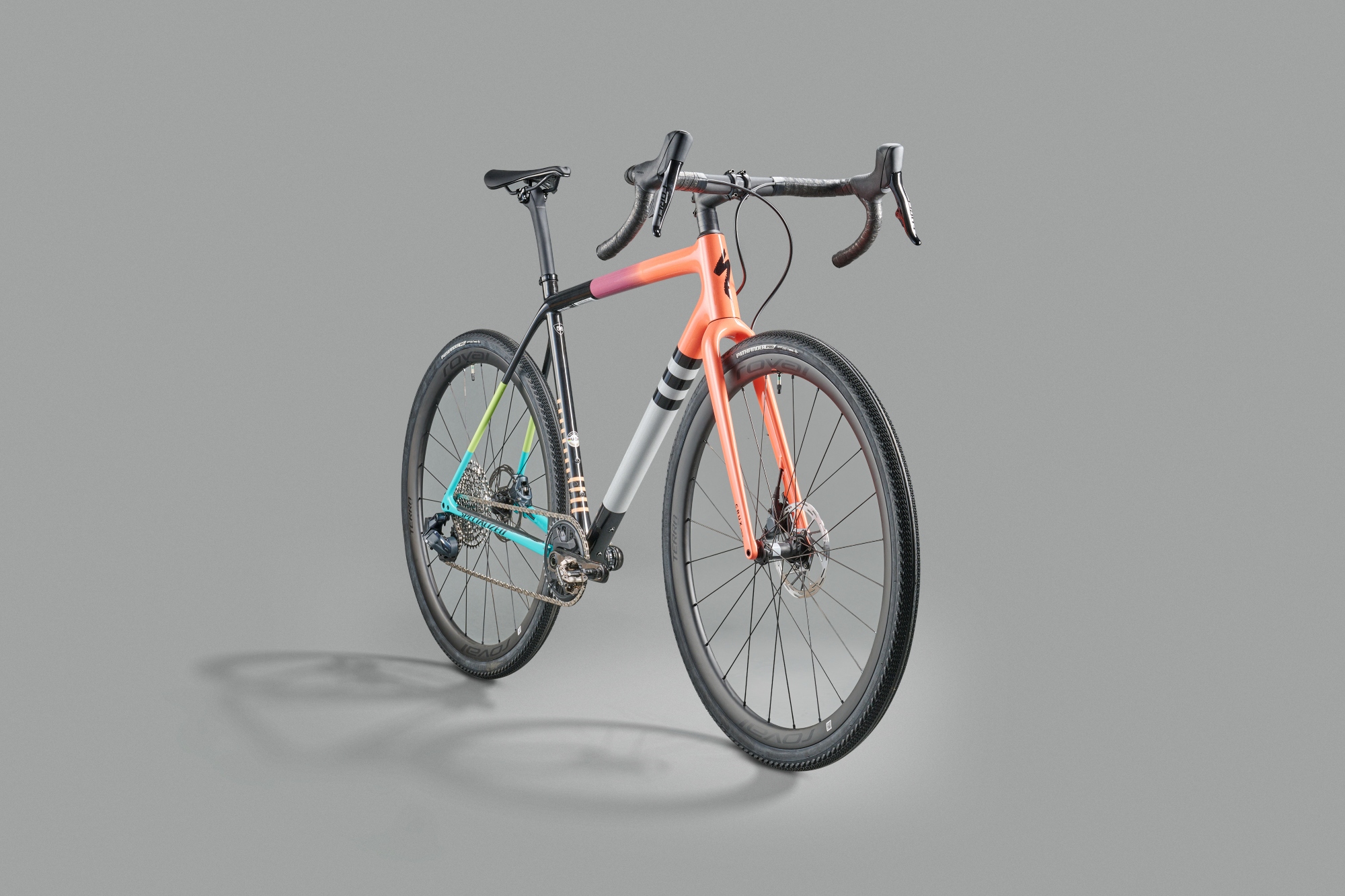
Previously, the Crux was Specialized’s dedicated cyclocross race bike, but the platform received an overhaul in 2021 that saw the frame recalibrated to better suit fast gravel, over muddy Northern-European fields.
As a side note - the Crux is still raced at CX World Cups - but a deep dive into whether CX geometry needs a rethink is for another time.
The headline changes were a lower BB, a longer front end (with a shorter stem to compensate) and shaving even more weight off the frame - the S-Works Crux is claimed at a feathery 725 grams, whilst the Pro and Comp versions still pip many a road frame at 825 grams (claimed).
The result is a gravel bike which is stable at high speeds and lightening quick when accelerating. Standing starts and steep banks proved particular fortes. Our test model was specced with 38mm Pathfinder Pro tyres and, without any additional damping or integrated suspension, the ride was a little more chattery on rougher sections of trail than the Canyon Grail or the Trek Checkpoint..
But on the flipside, the Crux is one of the few models on test which can take 2.1 inch (53mm) 650b tyres, which gives scope for a much more cushioned ride and significant gains in grip. There are plenty of other, user-friendly points too. Such as the round 27.2mm seatpost - which opens the door to swapping in a model with suspension - and a standard bar/stem setup, which makes components swaps and the addition of aerobars for any ultra-distance epics similarly fuss free.
Great though the Crux is, the more feature-rich Giant Revolt edges it out for our Gravel Bike of the Year award. The BMC Kaius, with its faster handling and more aggressive riding position, also edges the Crux out as our Best for Speed category winner.
The Crux is still an excellent bike and, for some people, will be exactly the balance between gravel performance and outright speed that they’re looking for. But that elision of categories means it’s not the outright best in either.
- Price range: $4,200 - $12,250 / £4,600 - £11,500
- Model tested: $8,200 / £7,250
- Weight: 7.41kg
- Groupset: SRAM Force AXS 1x12-speed
- Wheels: Roval Terra CL Wheel | 25mm
- Tyres: Pathfinder Pro 700x38c
- Handlebars (in frame size 54cm): Roval Terra, carbon 42cmt
Trek Checkpoint SL 7
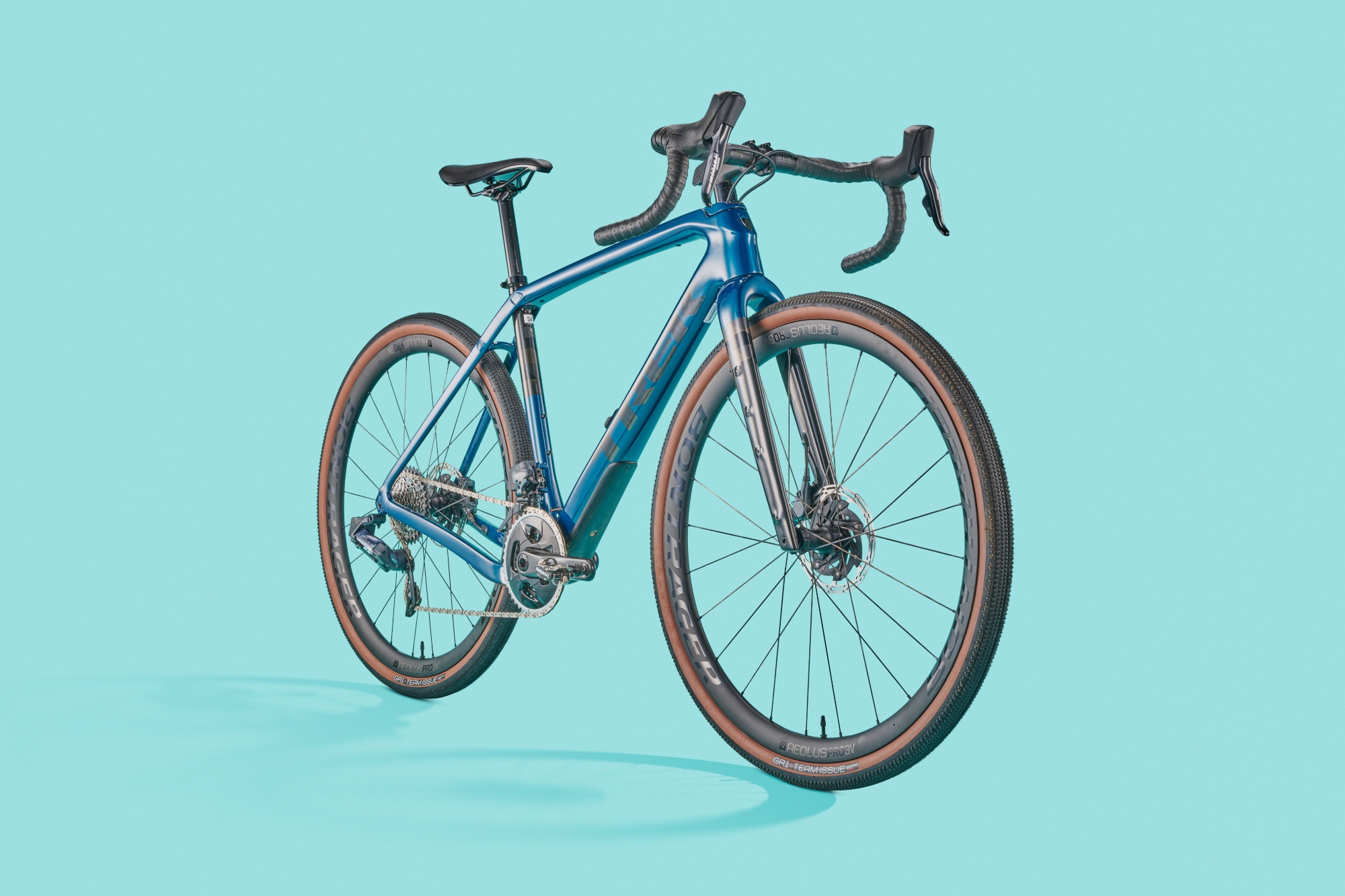
The Checkpoint is a particularly exciting platform. The previous iteration was already quite unique and really stood out from the crowd. But Trek has since given the Checkpoint another revamp - a shame for the previous model’s diehard fans, although it opens the gates for new ones.
What hits the hardest is the loss of the ‘Stranglehold’ dropouts, which enabled you to adjust the chainstay length by up to 15mm (to a minimum of 425mm). This put the previous Checkpoint in line with most quick-handling gravel race bikes, but the biggest loss is to the singlespeed community. Those Stranglehold dropouts were particularly helpful for tensioning the chain.
As it is, Trek has now fixed the chainstays at 435mm and reoriented the Checkpoint to be a bit more of a mile-muncher. The carrying capacity has been greatly increased by the addition of triple mounts on the fork legs and additional storage inside the downtube. You can even fit a rear rack should you wish; the typical bikepacking mounts under the downtube and on the top tube are all present, too.
But although the new Checkpoint’s handling is a little more measured than most of the other models on test, its racing genes do still show through. On wide, open double-track, where straightline speed is the order of the day, the Checkpoint was up there with the fastest models on test - it’s just the tighter and twistier corners where it gets a little hung up.
The chunky tubing, clearance for 2.1 inch 650b tyres and Isospeed decoupler seatpost make the Checkpoint particularly well-suited for rougher UK surfaces. Whilst the second two points make the bike more comfortable for you, the first makes you more comfortable with the bike - unlike the skinnier frames on test, I didn’t find myself wincing out of concern for the bike when riding hard over the rougher stuff.
The Checkpoint is the most expensive model we have on test, topping out at £12,000 - which is over double that of the top-end Giant Revolt. The entry-level has better comparative value but still starts at £1,000 over the cheapest model on test.
- Price range: $3,399 - $12,249 / £3,700 - £12,000
- Model tested: $6,699 / £6,400
- Weight: 8.9kg
- Groupset: SRAM Red AXS 2x12-speed
- Wheels: Bontrager Aeolus RSL 37V | 25mm
- Tyres: Bontrager GR1 Team Issue 700x40c
- Handlebars (in frame size 54cm): Bontrager Pro IsoCore VR-SF, 42cm
Cannondale Topstone 3
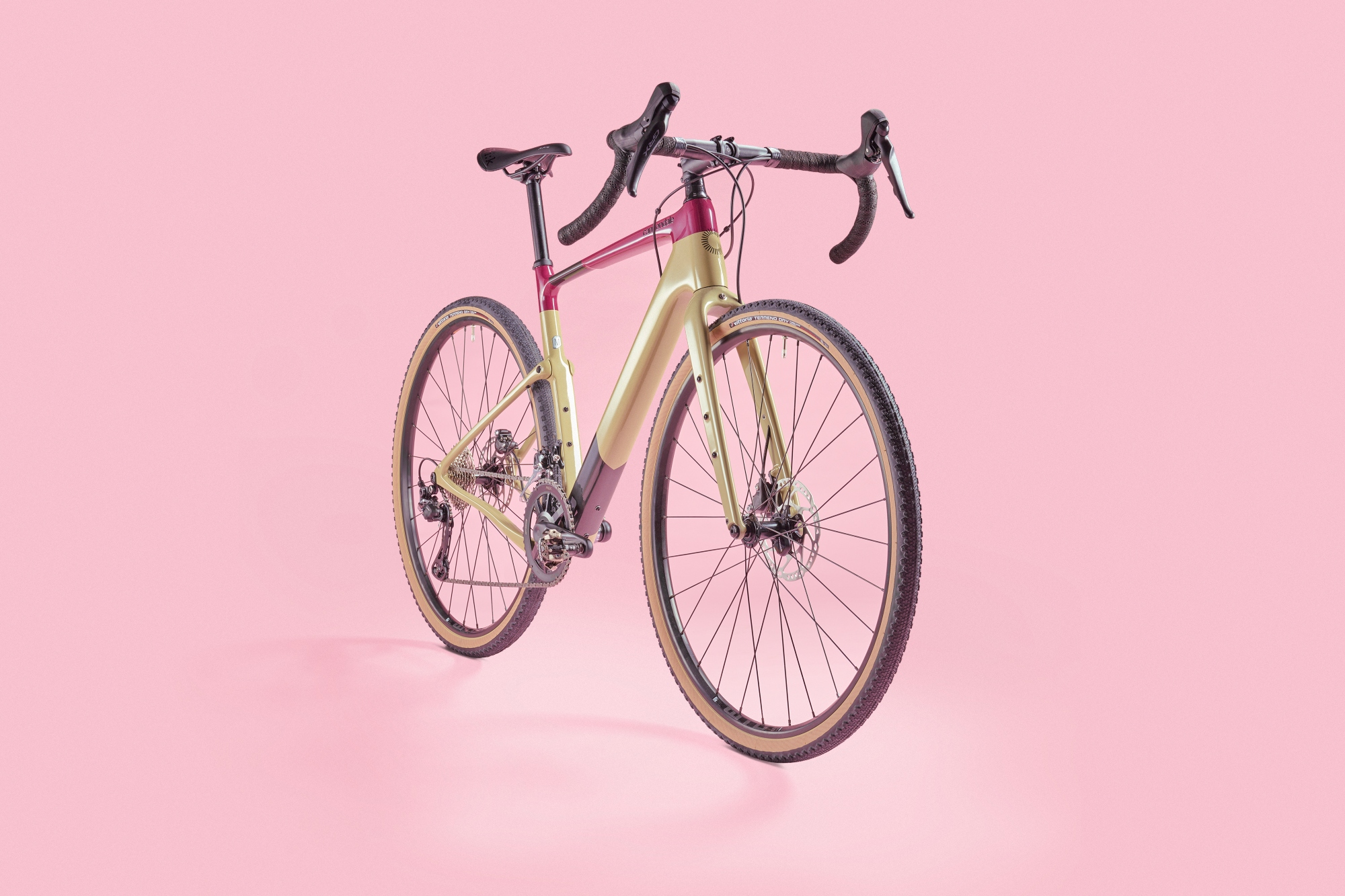
Cannondale is a brand with a reputation for doing things differently and, on the whole, that bears out in the Topstone.
But let’s start with the frame specs and geometry. Like the Trek Checkpoint, the Topstone has clearance for 700x45c tyres or 650b x 2.1in, but this is combined with chainstays which are amongst the shortest at 420mm and the shallowest bottom bracket drop on test at just 67mm. Those second two points are typically the hallmarks of an aggressive, quick handling gravel bike - the first is typical of a more rugged adventure oriented model.
Still, despite the unusual combination, the Topstone pulls it off - a clear reminder, if it were needed, not to judge a book by its cover (or a bike by its spec sheet). The ride had a strong bent towards the fast and the snappy, responding immediately to line adjustments and in the cornering - but it all still felt quite controlled, it wasn’t a razor-edged balancing act.
Naturally, Cannondale’s new Smart-Sense system gets a look in here, with the option to choose a model with integrated front and rear lights (as well as a rear-facing radar) which all run off the same single battery. There are models without those extras ready-specced, too.
But perhaps most notable is the KingPin rear suspension. Whereas most gravel bikes focus on suspending and isolating the rider from the bumps, on the Topstone it’s the rear axle which moves. This greatly improves the traction on loose and technical climbs, but the rigid front triangle means that any impacts from the front wheel still get transmitted up the seat post. The result is that the comfort isn’t on a par with the Trek or Canyon systems.
Incredibly, the entry-level Topstone is £1.00 off being the joint-cheapest on test. Alongside the Ribble Gravel SL, the Topstone is one of the most accessible models on the market. That said, we would recommend opting for a model with a Lefty fork, to better absorb the initial impacts and really get the most out of the rear suspension
- Price range: $2,825 - $8,500 / £2,700 - £8,000
- Model tested: $3,325 / £3,200
- Weight: 9.22kg
- Groupset: Shimano GRX 2x11 speed
- Wheels: WTB ST i23 TCS | 23mm
- Tyres: Vittoria Terrano Dry 700x38c
- Handlebars (in frame size 54cm): Cannondale 3, butted 6061 Alloy 42cm
BMC Kaius 01 Three

The BMC Kaius is a new platform for the Swiss brand. It was designed with the UCI Gravel World Champs in mind and even went on to take the top step of the inaugural podium, piloted to victory by none other than Pauline Ferrand-Prévot.
It is a phenomenally fast bike. Although the Kaius isn’t quite as lightweight as the Crux (the claimed frame weight is 910 grams compared to 725 grams) it has a lower front end - the lowest on test - enabling you to get a more aggressive and aerodynamic riding position.
This is backed up by two other superlatives: the shortest wheelbase and the (joint) lowest bottom bracket on test. It’s an interesting combination, generally bikes with a shorter wheelbase have faster handling, whilst a lower BB tends to give a more controlled feeling by lowering the centre of gravity.
The result is that the Kaius backs up its straight line speed (on both trails and road) with both snappy and precise handling when threading it through the corners. One area that the Kaius does fall a little short on, though, is the comfort. Although the D-shaped seatpost is supposed to have engineered compliance, this doesn’t come through noticeably on the trails.
By eschewing a traditional round seatpost design, there isn’t scope for swapping in a model with suspension. That said, with tyre clearance rated for tyres up to 44mm wide, there is some scope for smoothing out the bumps with wider rubber.
The Kaius does have the ignominious title of offering the most expensive entry-level build on test. Quite incredibly, at £5,699, the basic Kaius is more expensive than the top-end Giant Revolt. One redeeming point is that at least the Kaius starts with SRAM Rival AXS, so although the entry-level of models such as the Specialized Crux are cheaper, a Crux with a similar build is significantly more expensive than the Kaius - at £6,300 for a model with SRAM Rival AXS.
- Price range: $5,599 - $11,999 / £5,699 - £11,350
- Model tested: $5,999 / £5,699
- Weight: 8.89kg
- Groupset: SRAM Rival AXS 2x12-speed
- Wheels: CRD-400 Carbon | 23mm internal
- Tyres: Pirelli Cinturato Gravel H 700x40c
- Handlebars (in frame size 54cm): BMC RAB 02 42cm
Ribble Gravel SL Pro
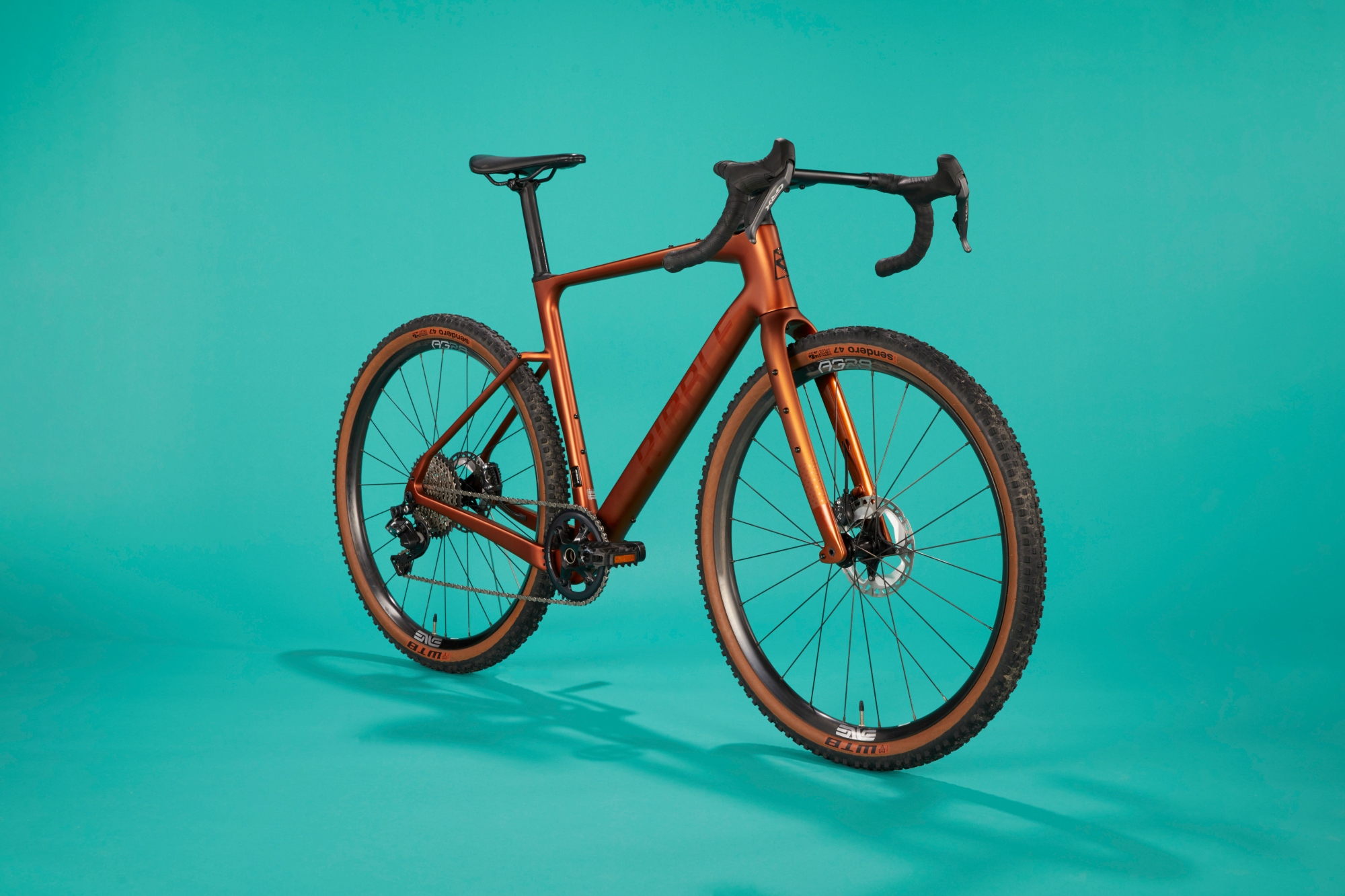
Despite the breadth of Ribble’s drop-bar off-road range (it has nine framesets made from four different materials, covering three separate geometries) the Gravel SL still finds itself, like the Trek Checkpoint, balancing a couple of different purposes and riding styles.
On the one hand, it is a lightweight carbon gravel bike built for speed. The Gravel SL can boast aero flourishes, from kammtail tube shapes to its dropped seat stays and one-piece cockpit. It’s lightweight, responsive to accelerations and has the third lowest stack height on test.
Then again, the Gravel SL Pro also comes bedecked with bosses and mounting points for pretty much attachment you could think of. There are top tube and underside-of-the-downtube bosses (which complement the sets inside the main triangle) and triple bosses on the fork legs. There are even mounts for a pannier rack and mudguards.
Essentially, the Gravel SL is a beast of burden and a race horse all rolled into one. That has it’s perks - I greatly appreciated the versatility on a bikepacking loop through Morocco’s High Atlas mountains. Even when loaded up, the bike didn’t feel overly heavy, and it was great fun on sighting loops around Marrakech’s doubletrack gravel, before later hitting out into the mountains proper.
Then again, on tighter corners and the singletrack trails back at home, the handling of the Gravel SL simply isn’t as fast as the more dedicated gravel race bikes on test.
Despite its many mounting points, the Gravel SL still doesn’t win our Best Expedition Bike category. In comparison with the Trek Checkpoint, Ribble’s offering lacks the integrated downtube storage, comparable vibration dampening and the frame isn’t rated for 2.1 inch 650b tyres.
You can find even more detail in our full Ribble Gravel SL Pro review.
- Price range: £2,699 - £4,399
- Model tested: £4,399
- Weight: 8.93kg
- Groupset: Shimano GRX Di2 1x11-speed
- Wheels: LEVEL Gravel DB Sport Carbon 650b | 23.5mm
- Tyres: WTB Sendero 650b x 47mm
- Handlebars (in frame size 54cm): LEVEL 5 Carbon Integrated Flared Gravel Handlebar 42cm
Pearson On and On
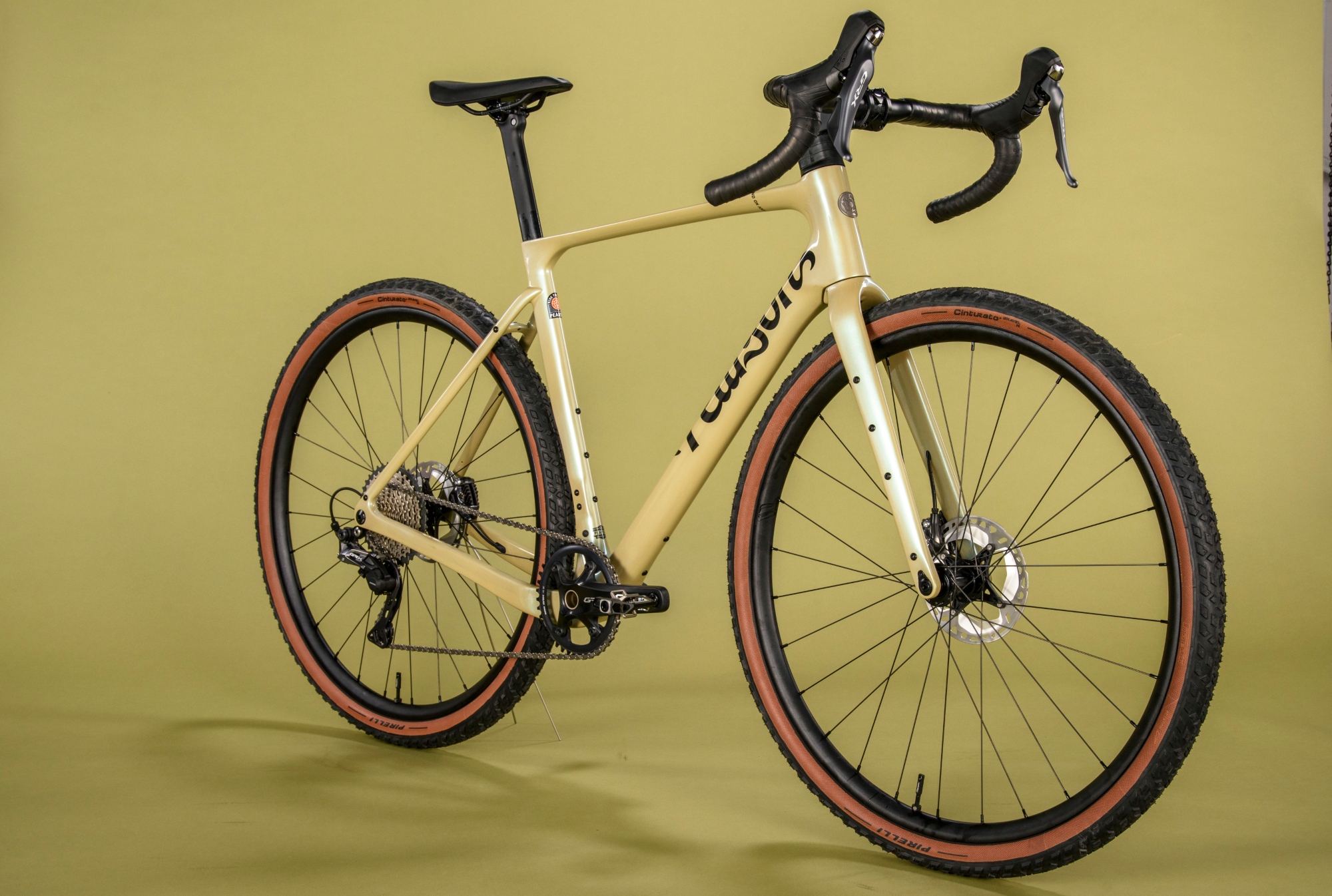
There aren’t many bike brands which can boast a heritage longer than Cycling Weekly’s own. Both Bianchi and Brooks have the accolade of predating our first publication in 1891, but even they are both whippersnappers in comparison to Pearson.
The family-run bike shop (now on its fifth generation of Pearsons) was established in 1860 and has been officially recognised as the world’s oldest bicycle business still trading today. It's seen plenty of trends come and go: from wooden rims and 35mm tyres in the first Tour de France, all the way to 19mm tubulars at the turn of the 21st century.
More recently, Pearson has moved away from selling big brand bikes and is instead selling its own. The On and On is an open mould frame (due to costs) but Pearson’s design input has shaped every aspect of it. It has a truncated seat tube, aero seat pin, dropped seat stays and internal cabling - as well as mounts on the fork, top tube, down tube and main triangle.
In all, the On and On has a very similar purpose and optimisations compared to the Ribble Gravel SL. It too is designed to be lightweight (for a gravel bike) and fast in a straight line, as well as offering the potential for heavily laden bikepacking. The geometry of both is geared towards being stable under load.
The 45mm Pirelli Cinturato Gravel M tyres that the On and On came specced with were a good match for the late spring slop of Surrey bridleways - though they did prove a bit sluggish on the roads. The stretched out position wasn’t far off a road bike, so if you normally ride with a couple of spacers under the stem, you might still be able to replicate your position on the On & On for greater speed on non-technical terrain.
The On and On is among the cheaper models on test, though Giant still manages to undercut Pearson with its Revolt gravel bikes (when dressed in comparable specs). Still, the price of the On and On stacks up well against the rest of the competition - and there’s the heritage and customer aftercare to consider, too.
Scott Addict Gravel
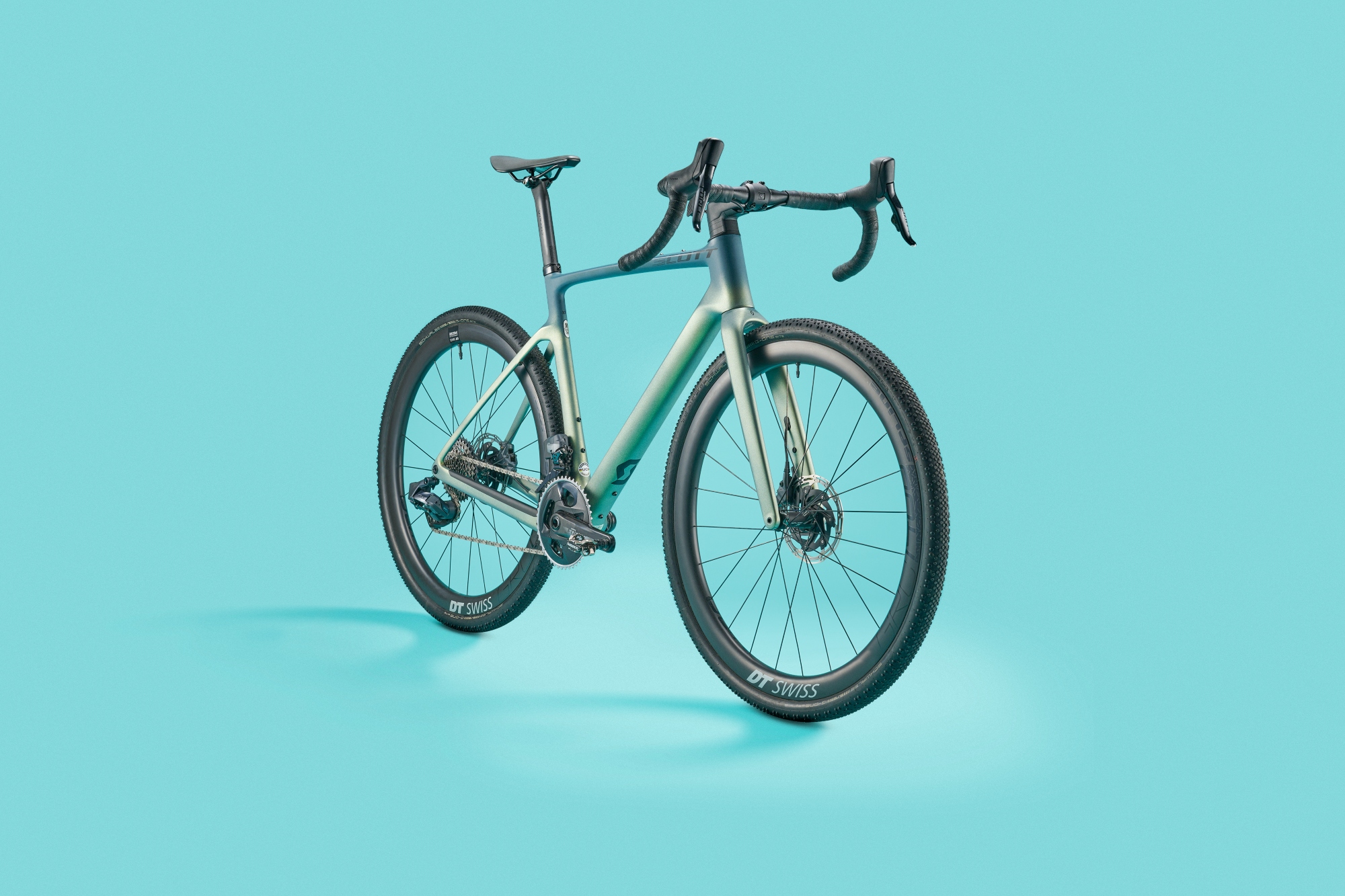
Scott deserves credit for just how attentive it’s been to the changing contours of the ‘gravel scene’. The first Addict Gravel was unveiled right back in 2017, making Scott one of the first big bike brands to commit to the category. The next step was to refine the racing pedigree of the platform. As such, this second iteration of the Addict Gravel was one of the first models to be designed specifically for the UCI Gravel World Champs.
Like the Specialized Crux and BMC Kaius, Scott’s Addict Gravel prioritises speed over bikepacking functionality: it too eschews a triple-bossed fork in favour of a lighter and more minimalist design. The concessions to luggage are confined to down tube bosses for an extra cage and mounting points for a bolt-on top tube bag.
But where the Crux and Kaius occupy the extreme chin-to-the-bars end of the gravel racing spectrum, the Addict Gravel takes a more middle-of-the-road approach, incorporating a higher stack and a longer wheelbase. The Addict Gravel does still come in lower and shorter than both the Trek Checkpoint and the Giant Revolt - it’s pretty much as close to a midpoint on this spectrum as is possible to get.
The result is a very well-balanced ride, one which is likely to suit the greatest number of people and riding styles. I was able to thread the Addict Gravel through technical trails, wind it up on fast sections of doubletrack and hammer down challenging descents.
But I was also just as happy riding all day at party pace. I took the Addict Gravel on a three-day bikepacking trip through the Cambrian Mountains in the heart of Wales and it handled all that equally comfortably and confidently.
Of course, there will be those who are after the greater specificity at particular ends of the spectrum. If you know that you need a lower front end and the fastest handling on offer - or if fork mounts and compatibility with 2.1in 650b tyres are deal breakers - then the all-rounder Addict Gravel wouldn’t be right for you. But if you don’t want to commit to either extreme, though, it is an excellent option.
Despite all this, the Addict Gravel does still miss out on the top spot of our Gravel Bike of the Year. However, that is less a criticism of the Addict Gravel but a reflection of how well executed the Giant Revolt is.
The first concession the Addict Gravel makes regards the seatpost. Whereas Scott has opted for a propriety D-shaped post, Giant’s Revolt both has its cake and eats it. The Revolt also comes stock with a proprietary post (similarly infused with claims of compliance), but Giant gives the option to swap in a traditional round post, leaving your choices open for droppers and suspension seatposts
Second, is the rear axle flip chip. Set in the short mode, the Revolt is more aggressive than the Addict Gravel. In the long mode, though, the Revolt becomes more relaxed. Whereas the Addict Gravel splits the difference, the Giant Revolt provides greater versatility. This bears out in the fork choice, too. The Addict Gravel offers no mounting options, whereas the Giant Revolt has a pair of bosses on each leg.
Just to be clear, none of those points detract from the Addict Gravel in and of itself, but they do cinch the top spot for the Revolt. Still, the Addict Gravel does manage to top the Giant Revolt in a couple of respects.
First are the paintjobs, which are simply stunning and easily the best on test. Second is the price. I’ll go into more detail in our Best Value category award but, in short, a Revolt with SRAM Rival AXS costs £4,899, whereas an Addict Gravel with the same groupset comes in at £3,199 - I think that speaks for itself.
- Price range: $2,999 - $9,999 / £3,199 - £8,799
- Model tested: $6,699 / £5,799
- Weight: 8.68kg
- Groupset: SRAM Force AXS 2x12-speed
- Wheels: DT Swiss GRC1400 Disc | 24mm
- Tyres: Schwalbe G-One Bite 700x45c
- Handlebars (in frame size 54cm): Syncros Creston 1.0 42cm
Overall Winner - Giant Revolt Advanced Pro
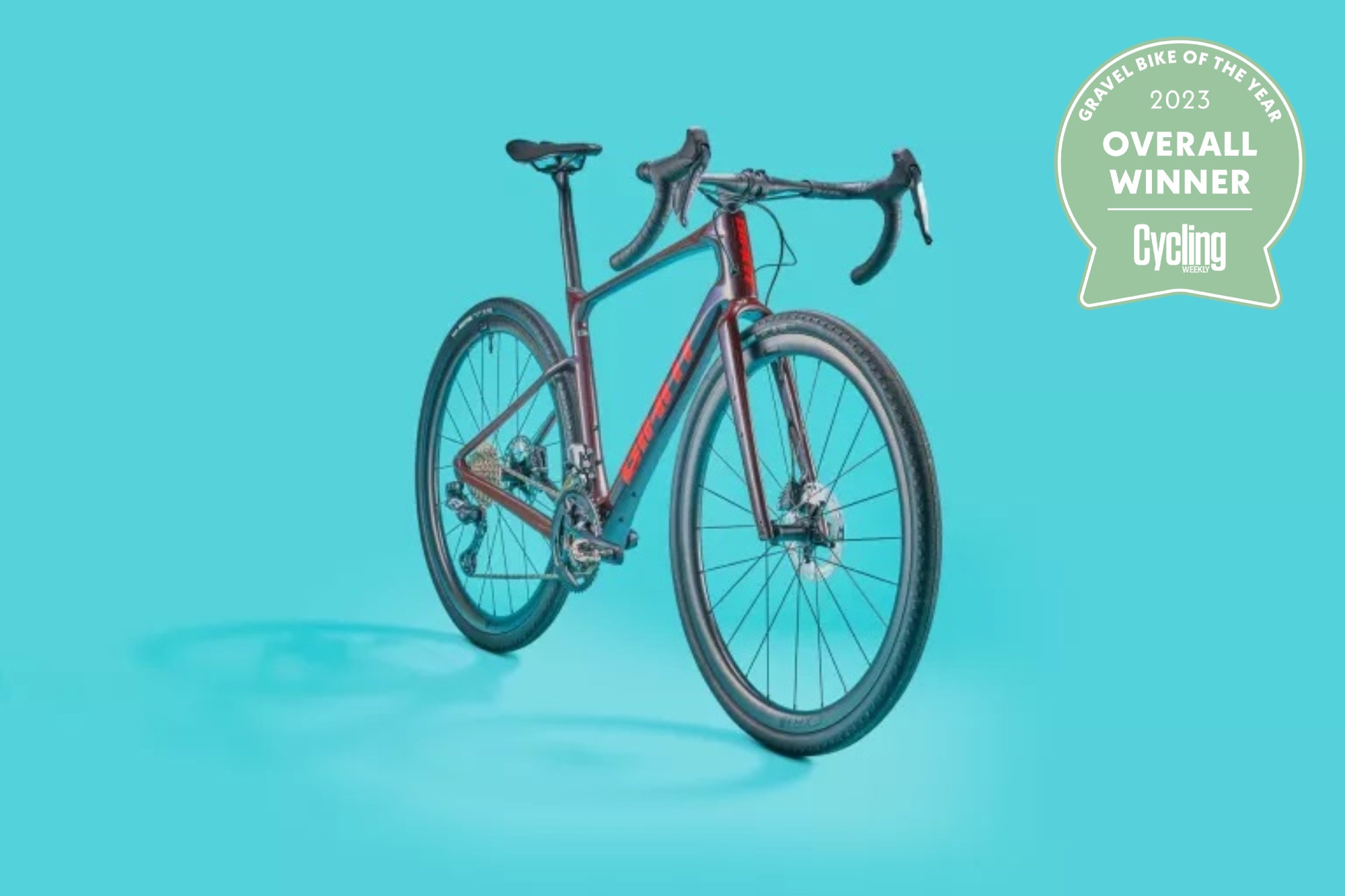
Whereas so many gravel bikes cater for one niche or another, the Giant Revolt manages to straddle a much wider section of the spectrum than most. Still, it’s not a jack of all trades and master of none; it goes toe-to-toe with the best on either end - even offering some unique features which really make it stand out from the crowd.
Let’s take a run through all those spec details which make the Revolt quite so distinctive. After that, I’ll share how it all played together in the ride.
As I mentioned previously, the Giant Revolt manages to both have its cake and eat it regarding the seatpost setup. The stock D-Fuse seatpost is said to provide 12mm of flex (and you really can feel that compliance) but rather than simply being stuck with a proprietary post, the Revolt is also compatible with 30.9mm round seatposts.
This opens up compatibility with a greater range of dropper seatposts than a traditional ‘roadie’ 27.2mm tube, but skinnier seatposts can still be fitted with the use of a shim - which similarly keeps your options open for the majority of suspension seatposts currently on the market. None of the other bikes on test offer such versatility.
The next neat feature is the adjustable rear dropouts - previously also a feature on the Trek Checkpoint, but dropped from the latest iteration. Disappointingly for the singlespeed community, Giant’s design is binary, with only two fixed positions and therefore not much use for tensioning a chain.
For everyone else, though, the functionality is excellent. Set in the ‘short’ position, the Giant Revolt is up there with the most aggressive of racing gravel bikes - not quite in the echelons of the Specialized Crux and BMC Kaius, but slotting in ahead of the Scott Addict Gravel.
But when set in the ‘long’ position, the wheelbase extends further than the Ribble Gravel SL and Pearson On&On. Only the Trek Checkpoint has a more stable chassis. A secondary benefit of the FlipChip dropouts is that it opens up the tyre clearance to a whopping 53mm (2.1 inches) on a 700c rim - larger than any other model on test.
The Revolt is also well equipped in terms of mounts, with bosses on the down tube and top tube, as well as a pair on each fork leg. That’s not the triple mounts we normally see up front on the forks, so some cargo cages will be incompatible, but it does still open up the carrying capacity to some extent.
Coming onto the ride, the first thing to mention is the compliance, which was utterly exceptional. On the test loop, there were a couple of sections with significant ‘breaking bumps’ leading into the corners. On models such as the Crux, being without any form of suspension (and on 38mm tyres, rather than maxing out the clearances at 2.1in) riding these sections was very chattery and noticeably sapped my speed.
On the Revolt, though, despite the tyres being approximately the same width (40mm this time), the frame did an astonishing job of soaking up the impacts. Sure, there were a few more vibrations transferred up the seatpost than on the Canyon Grail - but then the Grail has a leaf-sprung suspension post with separate parts that move, rather than relying on the post simply flexing as with the Giant.
But the Canyon’s seatpost doesn’t provide any help at the bars - which contrasted with the front end of the Revolt. At the bars, I felt a similar vertical compliance to the seatpost, but still with a high level of lateral stiffness - I didn’t feel any flexing away from my line when loading it up in the corners.
For our overall Gravel Bike of the Year award, we make our decision based on performance alone, determining which bike is best with money being no object. Still, it is worth giving a mention to the price of the Revolt, because it does actually stack up pretty well there, too.
The top-end spec is the second cheapest of all on test, with Shimano’s GRX Di2 2x11 groupset and Giant’s excellent CXR 1 Carbon Disc wheels coming in at £5,499 and the wider range starting at under £3,000.
One criticism I would make, though, is the height of the head tube. With a stack of 586mm, it’s far and away the highest model on test. For pure gravel riding, that’s not much of an issue for me, I’d typically stick a few spacers under anything that’s more slammed. But for anyone who prefers a lower cockpit on gravel, that does present an issue. It would be better if Giant shrunk the head tube down and gave people more choice to set their own stack height.
Still, the Revolt is an excellent bike in so many other aspects - and the way it not only straddles, but excels, in two separate sections of the gravel spectrum is highly unusual and greatly appreciated.
- Price range: $2,400 - $6,400 / £2,999 - £5,499
- Model tested: $5,550 / £5,499
- Weight: 8.27kg
- Groupset: Shimano GRX Di2 2x11-speed
- Wheels: Giant CXR 1 Carbon Disc | 25mm internal
- Tyres: Maxxis Receptor, 700x40c
- Handlebars (in frame size 54cm): Giant Contact SLR XR D-Fuse 44cm
Best Expedition Bike - Trek Checkpoint
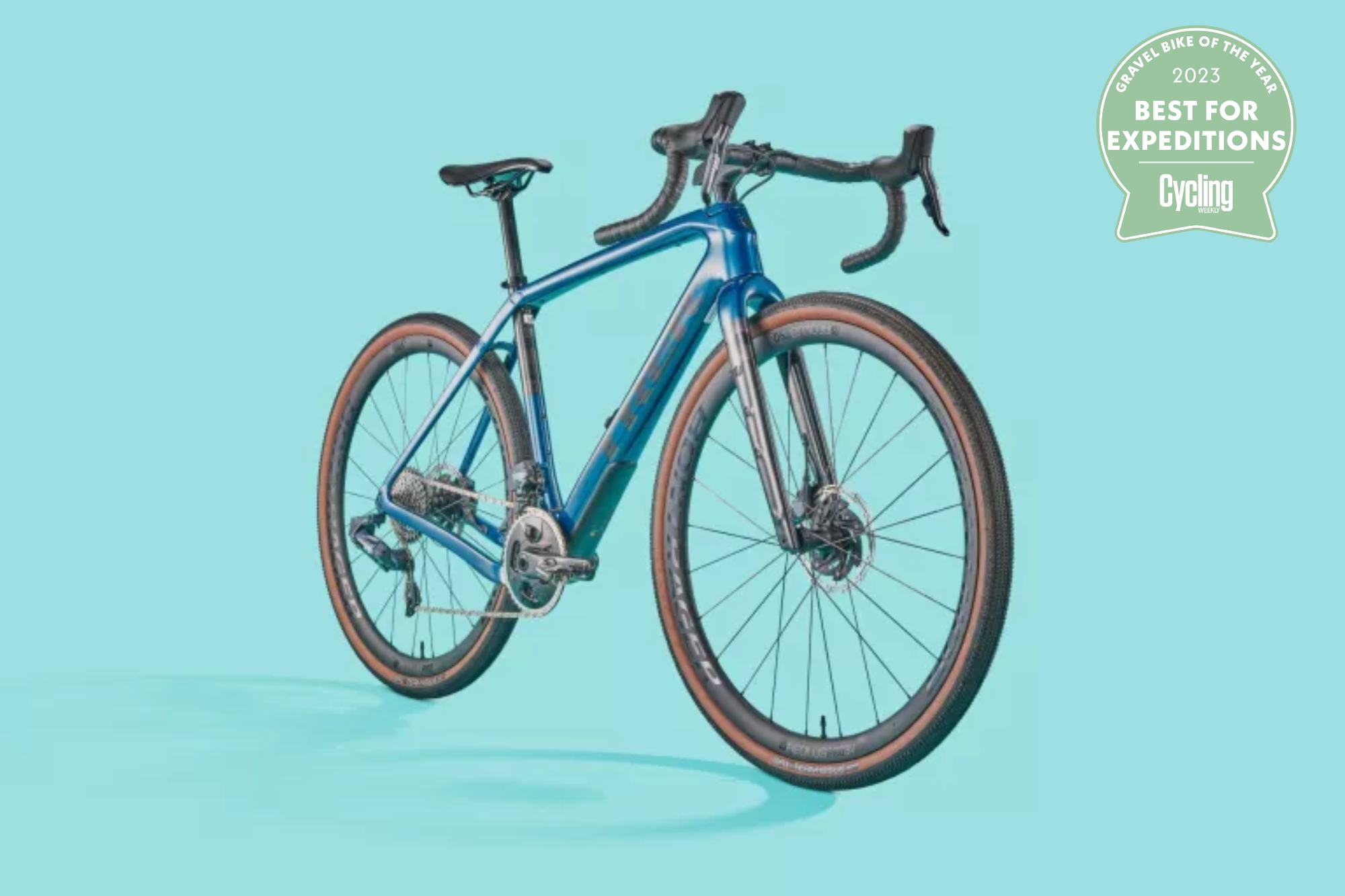
Although we’ve confined this grouptest to bikes which sit in the middle of the gravel spectrum, any slice of that spectrum contains its own (smaller) spectrum. Our Best Expedition Bike category recognises the model on test which is best equipped for the demands of ultra-distance gravel - coming with the carrying capacity, comfort, tyre clearance and geometry best suited to the task.
On these terms, the Trek Checkpoint stands head and shoulders above the competition. As mentioned, it comes equipped with more mounts and storage locations than any other bike on test. Although the Isospeed decoupler is not quite as forgiving as the Canyon Grail’s seatpost, the space for 2.1 inch 650b tyres more than makes up for that.
The geometry of the Checkpoint is notably more controlled than the others on test. It boasts the longest wheelbase by far, and the fork trail (which provides an indication to how stable the steering is) is also amongst the highest.
But although the Checkpoint provides a more composed ride compared to other gravel race bikes, it’s still much faster and more lively than any out-and-out gravel expedition bike at the more extreme end of the spectrum. If you’re up for bikepacking and longer distance rides, but still want to go fast on shorter loops, then the Checkpoint is an ideal match.
Best for Speed - BMC Kaius
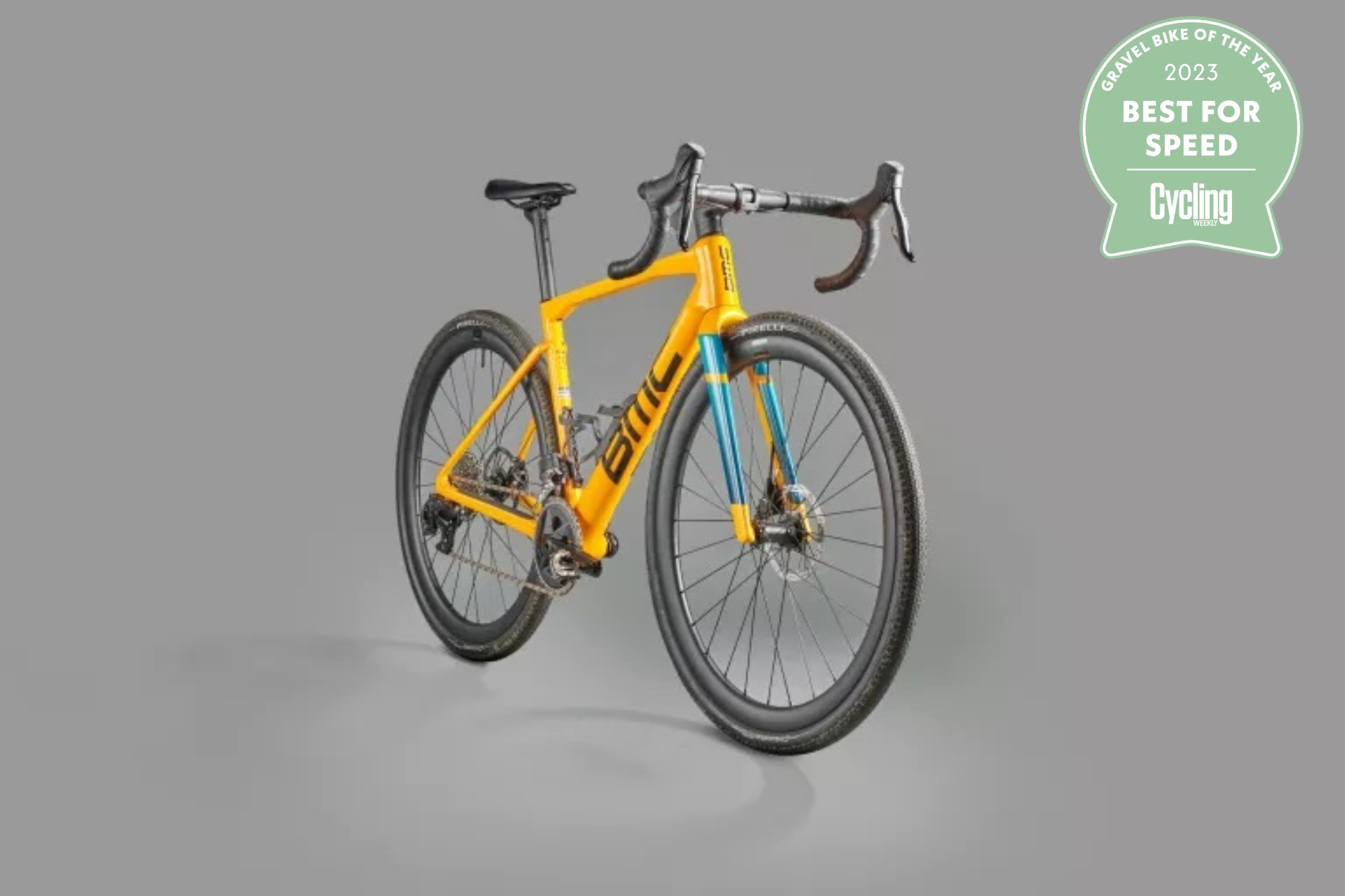
Again, acknowledging the existence of 'a spectrum inside a spectrum', our Best for Speed category recognises the bike on test which poses the greatest challenge to a stable of road and gravel bikes - which model best does it all, both trails and tarmac?
A year ago that might have been the Specialized Crux. Its frame is incredibly lightweight - lighter than many of the best road bikes - and its handling stood out amongst its peers as notably peppy and nimble.
But the BMC Kaius has taken things up another notch. Sure, the frame is a little heavier, but the riding position, and the ride itself, is even closer to that of a road bike. It makes you wonder whether ‘all-road’ bikes really have a place anymore - the Kaius is at least an equal on tarmac but still more capable off-road.
The place of endurance road bikes such as the Giant Defy and Trek Domane even starts to become questionable. Both those brands are quite fortunate that the Kaius isn’t compatible with mudguards (fenders), otherwise those questions would really start to be asked in earnest.
If you don’t care about 'guards, though, a Kaius with 35mm slick tyres - same as can be fitted into a Defy or Domane - would be a weapon on the road but would leave your gravel riding options still open wide.
Best of British - Ribble Gravel SL
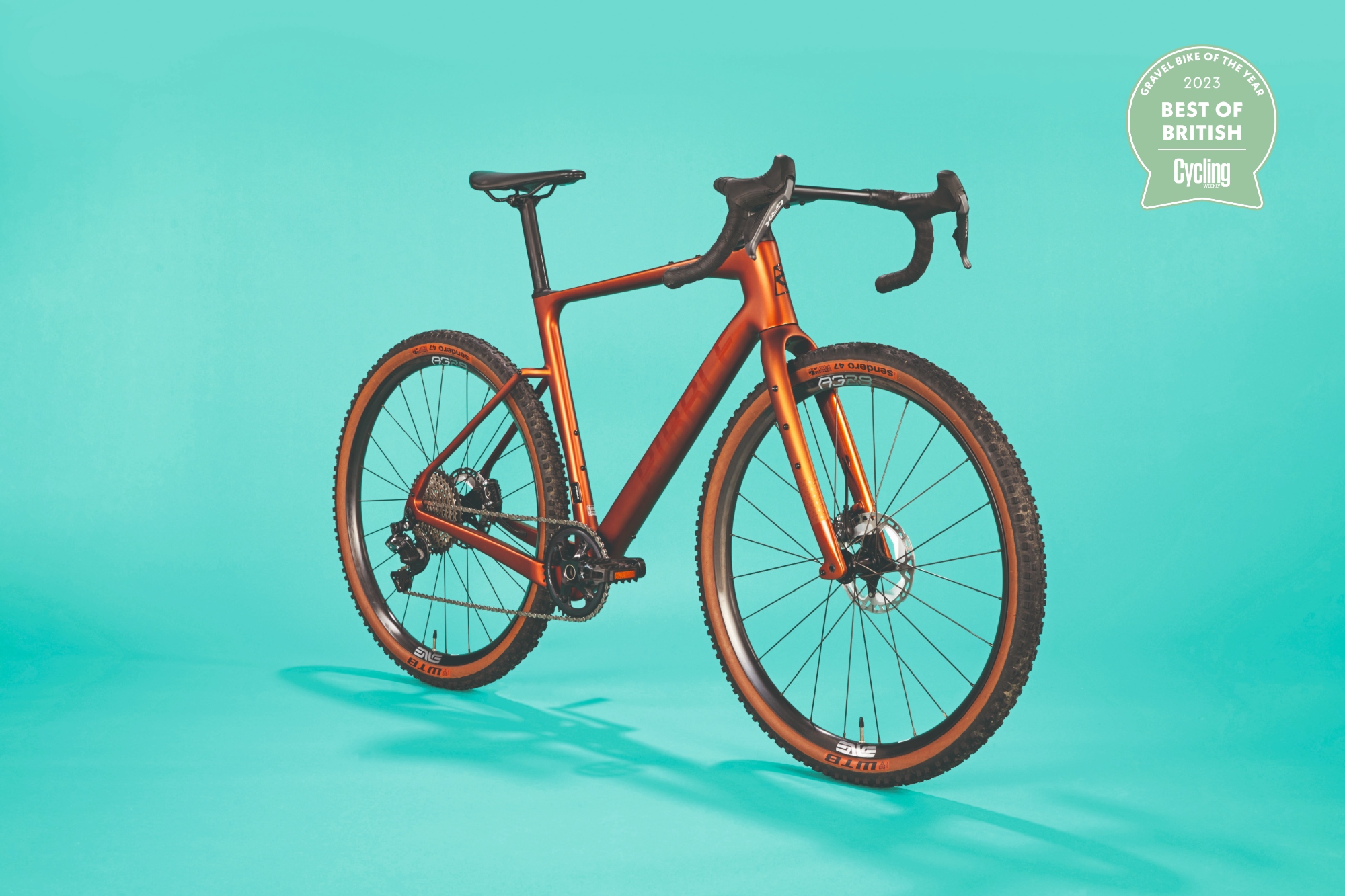
This award does what it says on the tin: it’s for the best British gravel bike on test, designed with British riding in mind. A nod to CW's roots, if you like.
Understandably, there is a convergence between the Ribble Gravel SL and the Pearson On and On, in terms of what each bike is optimised for. Both are lightweight with a dash of aero features. But both are also fully equipped for bikepacking epics and multi-day trips. The greatest distinction between them is apparent in their riding position and prices.
Regarding the former, the Ribble Gravel SL pairs its long and stable wheelbase with a notably low and aggressive rider position, tipping its purpose a little more towards the racing end of the spectrum. The Pearson, for its part, combines a similar chassis with a higher stack height - making it a little better suited to endurance riding, rather than threshold.
On the question of price, Ribble sweeps the board. Its range topping model with Shimano GRX Di2 comes in over £1,400 cheaper than an equivalently specced On and On. Plus Ribble’s range starts at £2,699 compared to £3,550.
This, combined with Ribble’s well established bike builder function (which allows you to tweak most elements of the spec) pushes the Gravel SL out front as the Best British gravel bike on test.
Best Value - Scott Addict Gravel
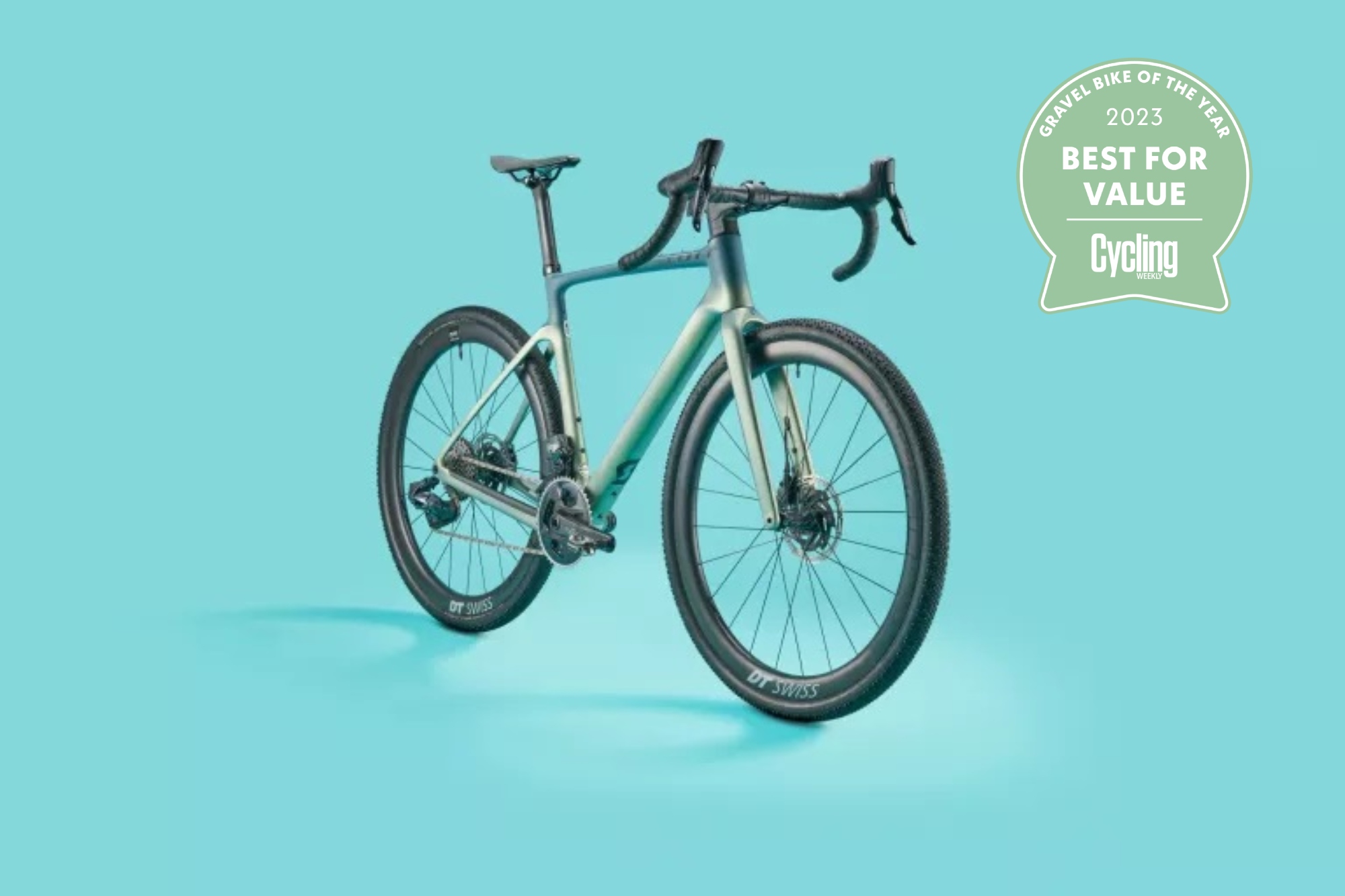
This category arguably requires the most nuance out of all we’re testing for. One basic approach would be to simply see which brand offers the cheapest entry level model and go with that. But out of the nine bikes we have on test, that would be the Canyon Grail. Although great in many respects, with its Hover Bar cockpit, it’s not a model we could hold up as the single ‘one-to-buy’ for the cash conscious.
The next cheapest entry-level models are the Cannondale Topstone and the Ribble Gravel SL. Both are around £2,700 and specced with Shimano GRX 11-speed groupsets. Each is a solid platform and GRX is a dependable workhorse; if your budget is already strained, both bikes are good options.
But is ‘cheapest’ really synonymous with ‘best value’? I don’t think so.
SRAM Rival AXS is a watershed groupset. It’s the least expensive electronic 12-speed gruppo on the market, yet provides you with the same huge range and tight jumps between gears as SRAM’s priciest offerings. You also get the option of running satellite shifters, plus all the other advantages of electronic gearing.
The entry-level Scott Addict Gravel comes equipped with this groupset and, at £3,199, it’s close enough to the Cannondale and Ribble that it would be well worth saving up a little longer to grab that massive step up in performance.
Unusually for Scott, that £3,199 Addict Gravel is actually the joint-cheapest model with SRAM Rival AXS out of all those on test. The title is shared with the Ribble Gravel SL, which would be the better option if you’re after fork leg mounts, but, overall, the Addict Gravel is the higher performance option - and the best value of all on test.
How we test
Just as we did for Race Bike of the Year, our testing of these gravel bikes consisted of two halves: the long term testing which all the bikes we review are subjected to, and the back-to-back testing on a set test loop.
This two-pronged approach has allowed us to put (in aggregate) a four figure mileage into the bikes on test, providing the insights you only get from time and hard miles. But it’s also equipped us with the direct comparisons only possible from successive rides in familiar conditions.
The task of the comparative testing again fell to our Tech Features Editor, Stefan Abram (no complaints there…), with the test loop devised to take in the greatest variety of terrain possible in one location. Using the broad network of trails in Swinley Forest, wide, open fire-roads doubletrack was an easy inclusion - as were steep, punchy climbs, technical and non-technical descents and flowing ribbons of singletrack.
For the most part, the surfaces consisted of hard-packed, slightly sandy, soil. Some areas were almost completely smooth, others were moderately rocky. There are many UK bridleways with much gnarlier surfaces than these - for those, we’d recommend maxing out your tyre clearances: if you can fit 2.1 inch tyres, then do. But with most of the models on test coming stock with 40mm rubber, these trails were a good match for those widths.
Stefan could do it all alone, of course, so a few more members of our experienced test team chipped in with some hard-earned off road miles.
Simon Richardson: Editor of Cycling Weekly magazine started racing bikes in 1995 and even spent a season racing in Belgium before becoming a cycling journalist. He lives on the edge of England's North Downs which provide an excellent - if often muddy - proving ground for gravel bikes.
Anna Abram: As she's based in South Wales, Fitness Features Editor Anna has access to some of the UK's best gravel riding. Along with Stefan, Anna also regularly puts gravel bikes to the test on bikepacking adventures in stunning locations.
Stefan Abram: Stefan loves gravel - he must do, otherwise how can you explain riding the 320km South Downs double? As well as using his local South Wales gravel, Stefan joined Anna on gravel rides in Morocco and carried out the back-to-back tests on the forests road trails around Bracknell in Berkshire.
Joe Baker: Cycling Weekly's newest recruit, tech writer Joe was already testing for us before he joined in May. He's raced bikes internationally but most recently completed the Traka 360 long distance gravel race alongside Tom Couzens another member of our Gravel Bike of the Year testing team!
The latest race content, interviews, features, reviews and expert buying guides, direct to your inbox!

After winning the 2019 National Single-Speed Cross-Country Mountain Biking Championships and claiming the plushie unicorn (true story), Stefan swapped the flat-bars for drop-bars and has never looked back.
Since then, he’s earnt his 2ⁿᵈ cat racing licence in his first season racing as a third, completed the South Downs Double in under 20 hours and Everested in under 12.
But his favourite rides are multiday bikepacking trips, with all the huge amount of cycling tech and long days spent exploring new roads and trails - as well as histories and cultures. Most recently, he’s spent two weeks riding from Budapest into the mountains of Slovakia.
Height: 177cm
Weight: 67–69kg